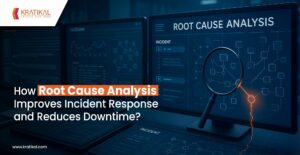Twitter recently suffered a data breach due to misconfigured settings in its application programming interface (API). As a result, hackers accessed the personal data of 5.4 million users and leaked it on an online forum. The stolen data was later put up for sale by threat actors for $30,000. Incidents like this serve as a reminder for organizations of all sizes to prioritize code security. Secure code review is critical in identifying and eliminating vulnerabilities within software code—before attackers can exploit them. In this blog, we’ll explore the importance of secure code reviews, their role in preventing breaches, and best practices for effective implementation.
Table of Contents
Secure Coding + Code Review = Stronger Security Posture
A strong application security posture begins with one fundamental principle: delivering well-secured software. At the heart of this process lies secure code review—a proactive and essential security measure.
Unlike dynamic testing, which evaluates applications during runtime, secure code reviews analyze the actual source code. This approach enables teams to uncover deeply embedded vulnerabilities—such as SQL injection flaws, insecure API calls, hardcoded credentials, and logic errors—that may go undetected in other forms of testing.
By embedding security-focused code inspections into the Software Development Life Cycle (SDLC), organizations can significantly reduce the risk of breaches by identifying and fixing vulnerabilities early—before they ever make it to production. Beyond risk reduction, secure code review nurtures a security-first mindset within engineering teams. When developers and security engineers collaborate during reviews, they not only catch flaws but also begin to recognize and avoid insecure coding patterns, naturally leading to safer code in future releases.
Secure code review also plays a key role in compliance assurance. It helps ensure that your code aligns with recognized security standards and frameworks, such as the OWASP Secure Coding Practices. Following SSDF guidelines helps organizations minimize software vulnerabilities, reduce exploit impacts, and address root causes to prevent future incidents.
When Secure Code Review Should be Implemented?
Secure code review is a foundational element of a proactive security strategy—one that prioritizes prevention over reaction. Rather than waiting for vulnerabilities to surface in production or after an attack has occurred, this approach shifts security to the earliest stages of development.
By conducting secure code reviews from the moment the first lines of code are written, organizations can identify and eliminate security flaws early in the development lifecycle. This not only prevents the need for constant patching post-deployment but also reduces technical debt and avoids costly rework.
More importantly, this forward-thinking approach helps teams stay ahead of malicious actors. By embedding security directly into the codebase, potential entry points—whether for exploitation or even minor misuse—are blocked before they can be weaponized. Even seemingly harmless oversights can be leveraged by attackers, which is why securing the code at its core is vital.Adopting secure code review as a standard practice greatly lowers the risk of breaches, enhances application integrity, and supports long-term resilience. It’s a strategic move that not only strengthens your software but also fosters a culture of security-first development across the organization.
Get in!
Join our weekly newsletter and stay updated
Cyber Security Incidents Related to Code Flaws
Numerous well-known breaches trace back to software coding errors that secure review processes might have caught:
Equifax:
Attackers exploited a critical vulnerability (CVE-2017-5638) in the Apache Struts framework used by Equifax. A patch was available two months prior, but was never applied. The flaw allowed remote code execution on Equifax’s systems. The breach exposed personal data of 147 million consumers. Equifax later agreed to a $700 million settlement for failing to patch this known vulnerability. This case highlights how a single unreviewed or unpatched component can lead to massive costs.
Microsoft Exchange:
A series of coding errors (four zero-day vulnerabilities) in Microsoft’s Exchange email server software were discovered and exploited by attackers worldwide. For roughly three months, attackers took advantage of a few coding errors to allow them to take control of vulnerable systems. Roughly 60,000 organizations (including businesses and local governments) were compromised. The breach demonstrates how complex enterprise code, if not thoroughly reviewed and patched, can give attackers a wide-open door.
Log4Shell
The Log4j (Java logging) library vulnerability (CVE-2021-44228) became infamous for its ubiquity. The flaw allowed remote code execution on any system using affected versions of Log4j. An FTC warning noted that this vulnerability posed a severe risk to millions of consumer products, enterprise software, and web applications. It forced organizations to urgently review and patch countless codebases. Though not a homegrown app’s code, this incident underscores the need for reviewing third-party code and library use – essentially an extension of code review in the supply chain.
Benefits of Secure Code Review
Implementing secure code review early in the development process brings long-term benefits across security, productivity, and organizational trust.
Reduces Last-Minute Vulnerability Remediation
Secure code review significantly lowers the number of vulnerabilities found in the later stages of the Software Development Life Cycle (SDLC), including Manual Penetration Testing (MPT). As a result, developers spend less time addressing issues during critical pre-release phases, easing the pressure on teams and ensuring smoother production rollouts.
Cuts Down Fixes in Production
Addressing vulnerabilities during development is far more efficient and cost-effective than fixing them in production. Continuous secure code review keeps teams close to the root cause, enabling faster identification and remediation—before security debt piles up.
Track Metrics and Remediation
Measure the outcomes of code reviews; number of vulnerabilities found, time to fix, recurrence rates. Use this data to adjust focus areas. If certain types of flaws keep appearing, update training and checklists. A program at scale should leverage dashboards or ticketing to ensure issues don’t slip through.
Enhances Code Quality and Maintainability
Secure code reviews go beyond identifying security vulnerabilities—they also bring attention to poor coding standards, inconsistent formatting, redundant logic, and inefficient structures. By catching these issues early, teams are encouraged to follow best practices like modular design, code reusability, and proper documentation. Over time, this leads to cleaner, more readable code that’s easier to maintain, scale, and debug.
Reduces False Positives in Later Testing Stages
Thorough secure code reviews help clarify the intent and behavior of code, reducing the chances of misinterpreting harmless logic as security flaws. By closely examining input handling, control flow, and edge cases, developers can identify areas that may appear risky but are actually safe. This early validation minimizes unnecessary back-and-forth during later testing stages. It also helps avoid wasted effort on investigating non-issues, allowing teams to concentrate on real threats.
Book Your Free Cybersecurity Consultation Today!
Conclusion
NIST 800-53 is one of the most robust and widely used cybersecurity frameworks today. It offers a clear, structured path to strengthen security and privacy controls. Though originally designed for U.S. federal agencies, its flexible approach suits private sector organizations aiming to manage risk, meet compliance, and build cyber resilience in a fast-changing threat landscape.
Following NIST 800-53 helps organizations meet regulatory standards and adopt a proactive, risk-based security approach. It focuses on protecting critical assets, addressing new threats, and encouraging ongoing improvement. Whether you’re securing government systems, managing supply chain risks, or aiming for top-tier security, NIST 800-53 offers a solid foundation. For leadership, adopting this framework shows a strong commitment to protecting digital infrastructure and earning stakeholder trust.
FAQs
- What is the difference between secure code review and source code review?
Through thorough source code review, developers can identify security vulnerabilities early, helping to prevent future breaches and attacks. Secure code reviews go beyond spotting errors—they provide insights into the coding patterns and practices that contributed to those flaws.
- What is a code review checklist?
A code review checklist helps identify potential issues while improving the software’s readability, maintainability, and performance. A well-structured checklist enhances the review process by offering clear guidelines on what to evaluate, making reviews more focused and effective.
- What should testers focus on during the secure code review process?
During a code review, testers should focus on high-risk areas like authentication, authorization, and data handling. These parts of the code are more likely to contain critical vulnerabilities if compromised.
- What is the most critical step in secure coding?
Testing plays a crucial role in securing software. By testing early and frequently, potential vulnerabilities can be identified and addressed before attackers have a chance to exploit them.








Leave a comment
Your email address will not be published. Required fields are marked *